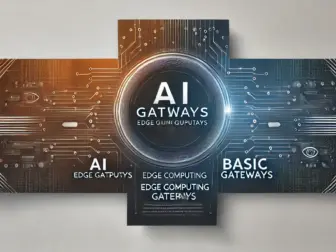Tag - AI Edge Gateway
Exploring the Potential of AI Edge Gateway in the Future of Technology
In the rapidly evolving landscape of technology, the concept of AI Edge Gateway has emerged as a game-changer. This innovative approach combines the power of Artificial Intelligence (AI) with Edge Computing to enable real-time processing and analysis of data at the edge of the network. By bringing AI capabilities closer to the source of data generation, AI Edge Gateway promises to revolutionize various industries by enhancing operational efficiency, reducing latency, and enabling new applications and services.
One of the key benefits of AI Edge Gateway is its ability to process and analyze data locally, at the edge of the network, without the need to transfer it to a centralized cloud server. This not only reduces latency and ensures faster response times but also enhances data privacy and security by keeping sensitive information closer to its source. By harnessing the power of AI algorithms at the edge, organizations can make real-time decisions based on local data, leading to more efficient operations and improved customer experiences.
Moreover, AI Edge Gateway enables advanced analytics and machine learning models to be deployed directly on edge devices, such as sensors, cameras, and IoT devices. This allows for intelligent data processing and decision-making at the edge, without relying on a constant connection to the cloud. As a result, organizations can leverage AI capabilities to automate processes, predict outcomes, and optimize performance in real time, even in environments with limited connectivity or bandwidth.
In addition to enhancing operational efficiency and performance, AI Edge Gateway also opens up new possibilities for innovation and growth across industries. For example, in the healthcare sector, AI Edge Gateway can be used to analyze medical images and sensor data at the point of care, enabling faster diagnosis and treatment decisions. In the manufacturing industry, it can help optimize production processes by monitoring equipment performance and predicting maintenance needs in real time. In the retail sector, it can personalize customer experiences by analyzing shopping patterns and preferences at the edge of the network.
As the adoption of AI Edge Gateway continues to grow, it is important for organizations to consider the implications of this technology on their existing infrastructure, data management practices, and security protocols. Implementing AI Edge Gateway requires a holistic approach that encompasses hardware, software, connectivity, and data processing capabilities. Organizations must also ensure that they have the necessary expertise and resources to deploy, manage, and optimize AI Edge Gateway solutions effectively.
Overall, AI Edge Gateway holds immense potential to transform the future of technology by enabling real-time data processing, analysis, and decision-making at the edge of the network. By harnessing the power of AI and Edge Computing, organizations can unlock new opportunities for innovation, efficiency, and growth across various industries. As we continue to push the boundaries of what is possible with technology, AI Edge Gateway stands out as a key enabler of the next wave of digital transformation.
